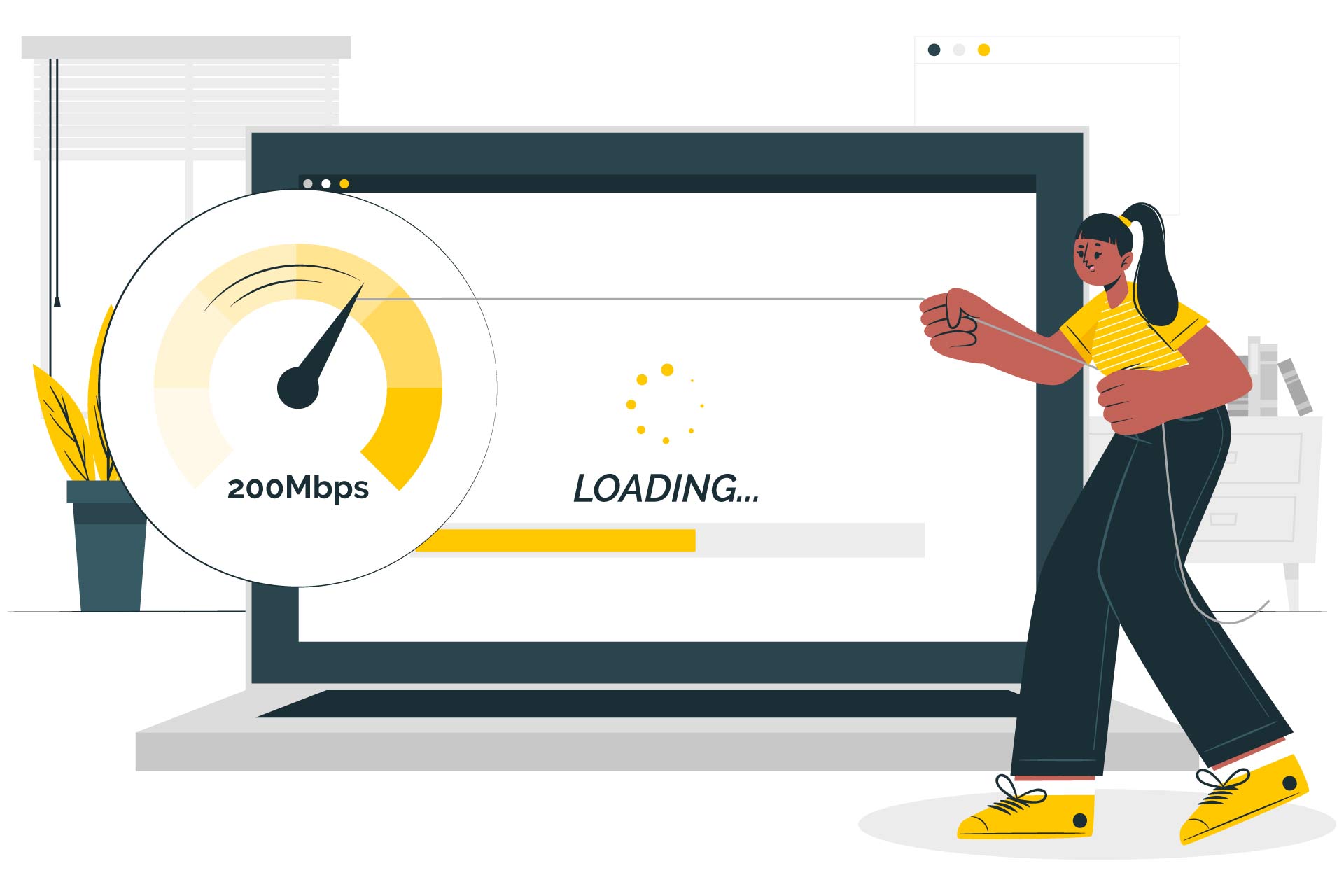In the fast-paced world of B2B eCommerce, where businesses rely on online transactions, website loading speed is crucial to the success of your business.
So, by understanding the importance of fast loading pages and implementing strategies to optimize website speed, you can gain a competitive advantage, improve user experience and ultimately boost your sales.
In this article, we’ll explore how website loading speed directly affects sales in B2B commerce and look at the impact it has on business.
What is page load speed (page load speed)?
This term (alternatively, page load time) denotes the speed at which a web page is downloaded from its hosting server and displayed in a user’s web browser. In other words, it is the duration (seconds) it takes for the entire content of a web page (e.g. text, images, videos, etc.) to load in a user’s browser from the moment the user clicks to go to that website.
Several factors can affect page load speed, such as the size and complexity of the page, the performance of the server, the efficiency of the code, the speed of the user’s internet connection and the presence of caching mechanisms.
What is Page Load Speed?
This term (alternatively, page load time) denotes the speed at which a web page is downloaded from its hosting server and displayed in a user’s web browser. In other words, it is the duration (seconds) it takes for the entire content of a web page (e.g. text, images, videos, etc.) to load in a user’s browser from the moment the user clicks to go to that website.
Several factors can affect page load speed, such as the size and complexity of the page, the performance of the server, the efficiency of the code, the speed of the user’s internet connection and the presence of caching mechanisms.
What are the effects of a slow website on your sales?
Website loading speed is one of the most critical aspects of user experience. Faster load times contribute to a smoother and more seamless browsing experience, while slower load times are likely to bring higher abandonment rates, lower conversion rates, low search engine rankings, reduced customer satisfaction and competitive disadvantage. Analysis:
Abandonment rate: Any increase in page load time is likely to prompt visitors to leave your site without taking any action.
In case a page takes a second to load, the user feels in control. However, after ten seconds, they will lose patience and there is a possibility that they will not visit your website again. Therefore, as the seconds increase, the bounce rate of your website increases.
Conversion rates: A fast loading means a better user experience. So, even a one-second delay in the loading time of a website can lead to a significant decrease in conversion rates.
Search engine rankings: Page load speed is a critical factor in SEO. Search engines give priority to websites with faster loading speeds, leading to higher rankings, which in turn, translates to more traffic and sales.
Competition: In today’s online environment, customers expect instant gratification. If your competitors have sites with faster loading speeds, they are more likely to attract prospective customers, putting your own position at a disadvantage.
How can you improve the loading speed?
You can follow the following techniques to optimize loading speed:
- Optimize images
On average, images make up 20% of the total weight of a web page, so it’s important to make sure they don’t hinder page speed. So, compress and resize images (not to exceed 5MB) to reduce the file size, but without sacrificing visual quality. Use vector images so that no detail is lost in the quality of the photos.
- Minimize CSS and JavaScript files
Minimize CSS and JS files by removing all unnecessary characters, comments and spaces in the code you are optimizing. We even recommend merging JS and CSS to reduce their total number. The website, thus, will not need to load a lot of files, which significantly reduces the loading speed.
- Using a content delivery network (CDN)
A CDN is a geographically distributed network of servers that work together to deliver your content faster. When a user requests a web page, the CDN serves the content from the server closest to their location. This reduces the distance they need to travel and improves load times.
Conclusion
As can be seen, in the context of B2B e-commerce, page load speed has a significant impact on sales. Even the slightest improvement in it can help you reduce abandonment rates, boost conversion rates and move up in search engines. Therefore, in today’s ever-changing online environment, you need to prioritize optimizing your website’s loading speed in order to stay competitive.
